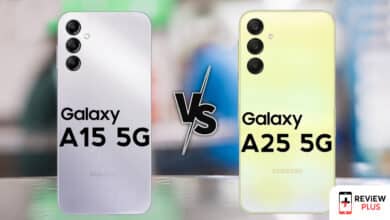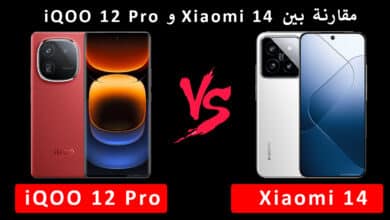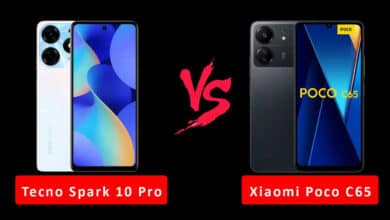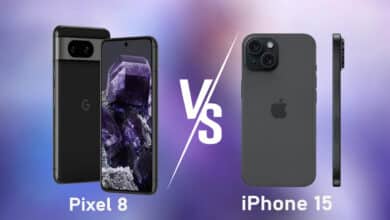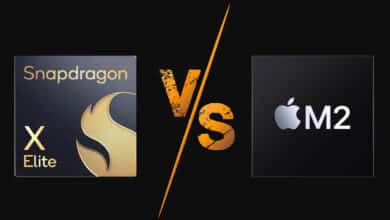Here is a comparison between the Huawei P60 and Huawei P60 Pro, showing the difference between the two phones, and clarifying the most prominent differences between the new revolutionary Huawei phones.
Huawei phones are known for their cutting-edge technologies, competitive features, revolutionary innovations, and unique designs that are unparalleled. However, there is one obstacle that may stand in your way while buying a Huawei phone at the present time, which is the inability to take advantage of Google Play Store applications or 5G network technology, due to the restrictions imposed by the United States government on the company.
Difference between Huawei P60 and Huawei P60 Pro
The lack of 5G technology is not a big problem for all users, especially in the Arab world and the Middle East, given that 5G technology is still not available in most countries, and there are some tricks to circumvent the Google Play Store support problem.
In any case, there is the Huawei App Gallery, which is full of tens of thousands of applications, which you can rely on instead of Google Play.
We did not come to talk about Huawei's problems or the negatives, but we actually came to talk about the positives. Last March, the company introduced its flagship P60 series of phones, which came to replace the P50 series.
It was the initial launch of the series Huawei P60 The new model was launched in the company's main home country (China), and then the series was launched worldwide during the month of May.
The series consists of three phones, namely Huawei P60, Huawei P60 Pro, and Huawei P60 Art, however, the last model remains exclusive to the Chinese market.
In this report, we will provide you with a comparison between Huawei P60 and Huawei P60 Pro, as they are the two models currently available in the global markets.
We do not know yet what the prices of the series will look like in the Middle East, but we can easily guess these prices, as the prices of the series start at a cost of 1119 EUR for the 8 GB model that includes a storage capacity of 256 GB. Then the cost rises to 1299 EUR for the 12 GB RAM and 512 GB storage model.
We have thoroughly investigated the main differences between the Huawei P60 and Huawei P60 Huawei P60 Pro You can also view the specifications of both phones in detail through our Review Plus website.
In fact, it is easy to analyze the common denominators between both phones, which are very many, but they are far from being completely identical, at least in terms of technical specifications and internal components.
If you are still hesitating between both phones and cannot make the appropriate decision, which one is worth your money, we will help you through this comparison by placing some red lines under the most important and prominent differences and differences between both models.
The Huawei P60 Pro has a larger Telephoto sensor

There are many similarities between the cameras of both the P60 and P60 Pro. For example, both are equipped with a 48-Megapixel main sensor with an f/1.4 aperture, which is one of the largest lenses we've seen on smartphones to date as it lets in more light while shooting in low-light conditions.
This main sensor is supported by PDAF phase detection auto stabilization, Laser auto stabilization AF and OIS optical image stabilization. On both models, you'll get great photos and exceptional video recordings from the main lens. Also, both models use a 13-Megapixel ultra-wide lens with f/2.2 aperture.
But speaking of the main differences in the camera setup, the P60 Pro has a larger 48MP Telephoto lens that is supported by physical sensor shift technology with optical stabilization and is capable of 3.5x optical zoom.
On the other hand, the base model P60 features a 12-Megapixel Telephoto lens that is supported by conventional optical stabilization, phase-detection autofocus, and supports 5x optical zoom.
Although the levels of optical zoom are at higher rates on the basic model, the “Pro” model will provide better results while taking personal photos while preserving the original quality of the image wonderfully. Also note that the Telephoto lens on the professional model has a resolution of 48 Megapixels, which is up to 4 times the resolution of the quality compared to the base model.
We don't notice any other tangible differences in the camera setup other than the Telephoto lens. Even the front camera on both models is the same 13MP wide-field lens with f/2.4 aperture.
For video recordings, they both support 4K video capture at 60fps and up to 960fps while recording at 1080p, as well as support for electronic stabilization technology.
So if a Telephoto camera is your top priority or you take a lot of selfies with your phone, the Pro model can be expected to give you much better results thanks to its larger and higher-resolution Telephoto lens.
The difference between Huawei P60 and Huawei P60 Pro is in terms of the screen
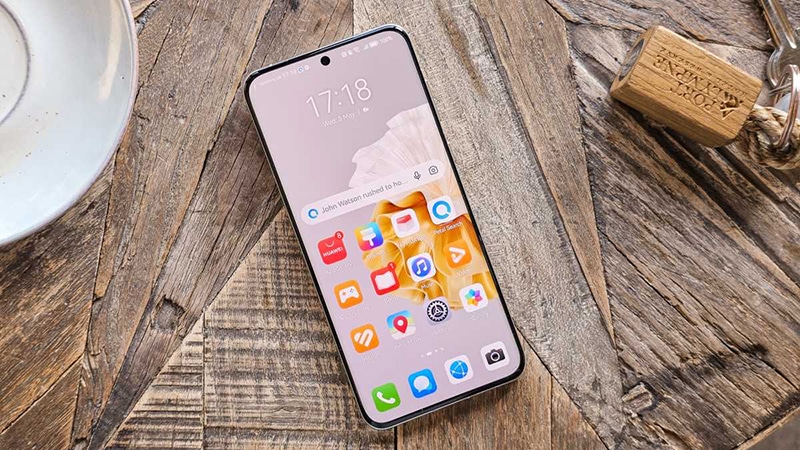
There are no differences in the display panels between the two phones. Both contain a 6.67-inch OLED display panel that supports one billion colors with LTPO 120Hz dynamic refresh rates to provide adaptive refresh rates in order to save energy. The screen resolution is FHD +, its dimensions are 2700 x 1220 pixels.
The only difference is that the Pro model screen is protected by a Kunlun Glass layer, which helps more effectively protect the screen from unintentional falls, and this protection is definitely stronger than the Corning Gorilla Glass Victus 2 protection used on the Galaxy S23 phones – at least that’s what Huawei said. It confirmed that Kunlun Glass is nearly 10 times stronger than Corning Glass. Unfortunately, the basic model in the series does not contain its screen on any kind of protection, which means that you will have to take good care of it.
But overall, both screens appear to be identical in everything theoretically and physically, whether in terms of size, display resolution, supported color standards, and adaptive refresh rate technologies.
The Pro model comes with more storage options

In terms of internal technical specifications, both are powered by Qualcomm's flagship Snapdragon 8+ Gen 1 SoC. This processor is made by TSMC and is much better than the first-generation model that was manufactured by Samsung, whether in terms of energy efficiency, temperatures, or ways to manage energy and temperatures. In addition, the Qualcomm processor contains the Qualcomm Engine AI chip, which contributes to enhancing the performance of the phone, based on artificial intelligence techniques.
So, both phones will offer an exceptional user experience and the ability to run all modern games on the highest graphics settings very easily.
The notable differences between both models are the storage options available, as the base model Huawei P60 comes with one storage option that includes 8GB of RAM accompanied by 256GB of internal storage.
As for the Pro model, it comes with 8 GB of random memory accompanied by 256 GB of storage, and there is another model with 12 GB of random memory and 512 GB of internal storage.
Unfortunately, we do not know exactly what generations of storage chips are used in both phones. But most likely it will be LPDDR5X RAM with UFS 3.1 or UFS 4.0 storage.
It is worth noting that the two phones contain a small Nano external memory card slot, which can accommodate cards with a maximum capacity of 256 GB.
Wired charging is faster on the Pro model

While both phones draw their power from a 4,815mAh battery, there is a slight difference in wired charging speed between both.
The P60 supports 66W wired charging and 50W wireless charging. As for the P60 Pro, it supports 88W wired charging and 50W wireless charging, as well as its support for reverse wireless charging.
Theoretically, both models are expected to provide excellent results while relying on wired or wireless charging, but the Pro model will certainly provide higher speeds and charge during shorter periods of time while relying on wired charging.
The only model in the series that has a larger battery capacity is the Art model because it contains a 5100 mAh battery, but unfortunately this model is exclusive to the Chinese market and we are not sure about Huawei's intention to launch it in the global markets.
Moreover, both the P60 and P60 Pro are backed by IP68 certification for water and dust resistance, while the base model weighs 197g, the Pro model weighs exactly 200g.
The base model is cheaper

All other features on both models are completely identical, both are supported by high-resolution stereo speakers and have a fingerprint scanner integrated under the screen and come with a unified design in terms of the front and back side.
So, what about prices? Certainly, the P60 Pro model is the most expensive, and this is for one or two very logical reasons, which is the result of using a larger, higher-resolution, and more advanced Telephoto sensor, and the other reason is reflected in the presence of a pioneering glass protection layer on the screen. As for all other areas, both are completely identical.
Conclusion
We hope that we have succeeded in explaining the most prominent differences between each of the Huawei P60 and Huawei P60 Pro. As you may have noticed for yourselves, both phones are among the best and most beautiful Huawei phones we've seen so far.
Both feature advanced screens with rich, vibrant color standards and dynamic refresh rates. But if you prefer to take higher quality and better-resolution selfies, the Pro model will definitely be the perfect companion for such scenarios.
At the same time, the Pro model gives you more options in RAM and storage size. But in the end, you will find that the only downside is that both are not supported by Google Play services. If Google Play services are not a source of interest for you, make sure that any of the two phones are definitely bargains.

